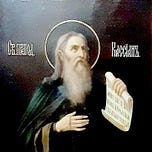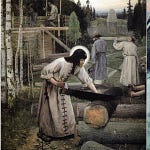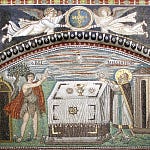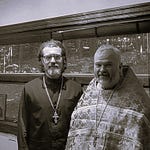The sickly food of moistened beans does not agree with everybody…
Much has been said about monastic rules of fasting. Here is a rule from Saint John Cassian, also known as John the Ascetic, who lived from approximately the year 360 to 435. At a young age, Saint John became a monk at a hermitage near Bethlehem and then spent the rest of his life at various monasteries. Around the year 420, Saint John wrote The Institutes of Coenobia, in which he codified the rules for communal monastic living which he had learnt primarily from the Desert Fathers of the monasteries in Egypt. Below is chapter 5 of book 5 titled De spiritu gastrimargiae.
And so on the manner of fasting a uniform rule cannot easily be observed, because everybody has not the same strength; nor is it like the rest of the virtues, acquired by steadfastness of mind alone. And therefore, because it does not depend only on mental firmness, since it has to do with the possibilities of the body, we have received this explanation concerning it which has been handed down to us, viz.: that there is a difference of time, manner, and quality of the refreshment in proportion to the difference of condition of the body, the age, and sex: but that there is one and the same rule of restraint to everybody as regards continence of mind, and the virtue of the spirit. For it is impossible for every one to prolong his fast for a week, or to postpone taking refreshment during a two or three days' abstinence. By many people also who are worn out with sickness and especially with old age, a fast even up to sunset cannot be endured without suffering. The sickly food of moistened beans does not agree with everybody: nor does a sparing diet of fresh vegetables suit all, nor is a scanty meal of dry bread permitted to all alike. One man does not feel satisfied with two pounds, for another a meal of one pound, or six ounces, is too much; but there is one aim and object of continence in the case of all of these, viz.: that no one may be overburdened beyond the measure of his appetite, by gluttony. For it is not only the quality, but also the quantity of food taken which dulls the keenness of the mind, and when the soul as well as the flesh is surfeited, kindles the baneful and fiery incentive to vice.
- Saint John Cassian, The Institutes of Coenobia, booк 5, chapter 5
Fasting 006: Nativity Fast in the Typikon
The Nativity Fast begins on November 15. For the Churches on the Julian calendar - Jerusalem, Russia, Serbia, Georgia, Poland, Sinai, Ukraine, and Japan - November 15 coincides with November 28 on the Gregorian calendar.
Fasting 004: “He was afterward an hungered.” (Matt 4:2)
We have previously discussed an idea that relevant chapters of the Typikon, rather than giving a rule on how to fast, presume fasting as a default state of a Christian life, and instead give us rules on how feast. Indeed, if we were to add up the 14 days of the Dormition Fast, 40 days of the Nativity Fast, 49 days of Lent, a conservative estimate of 14 days of the Apostles’ Fast, and 104 Wednesdays and Fridays throughout the year, we get 221 fasting days. For those who also fast on Mondays, this number goes up to 273 - more than two thirds of the entire year. Thus, it often seems that one fasting period ended only recently, while the next one is fast approaching.













